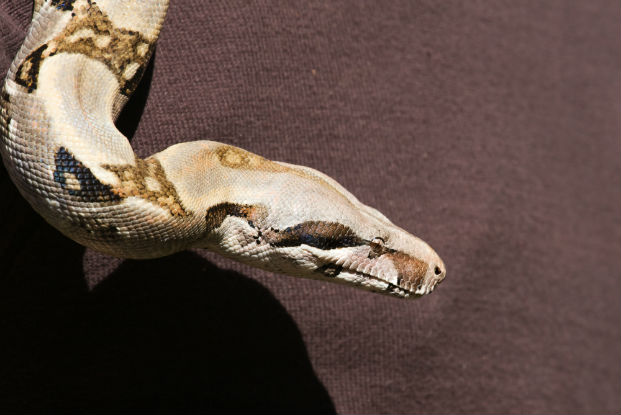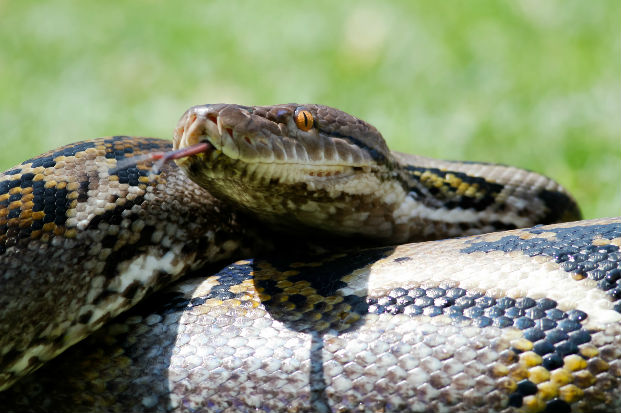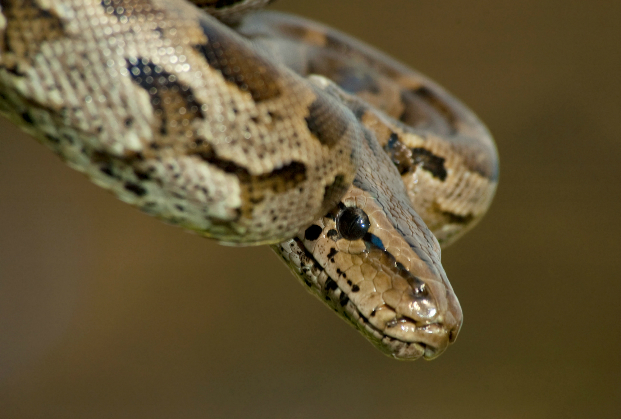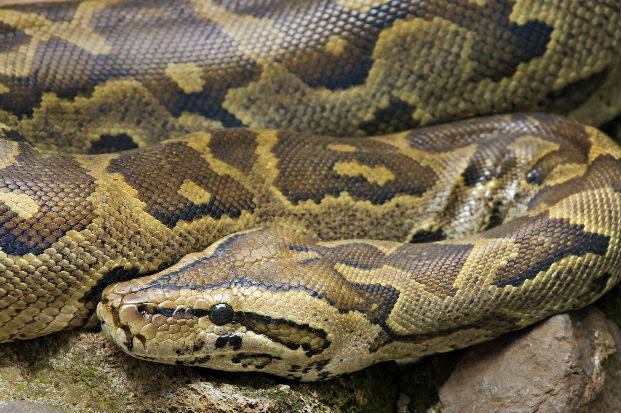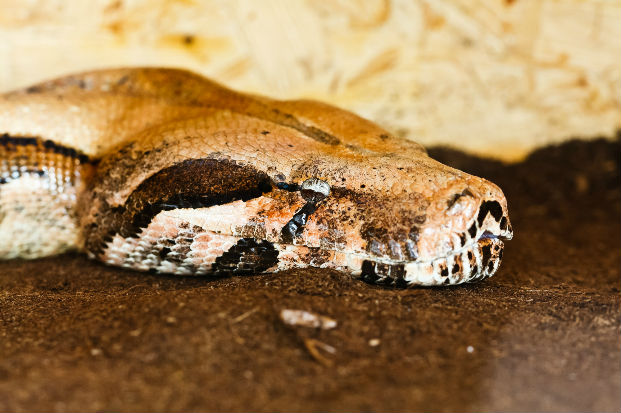The African rock python is the largest snake in Africa. It can reach 6 m in length and weigh 50 kg but the average is 2.5 to 5 m. With mottled shades of brown and disruptive markings it is perfectly camouflaged for a wide range of habitats, such as savanna, grassland, semi-desert, and rocky areas. The African rock python is non-venomous although it does have sharp recurved teeth which it uses for getting a good grip on its prey. Long-lived, it can reach 30 years old.
Vote for the fact you find most fascinating
The female African rock python demonstrates parental care which is very rare in reptiles. She coils around her eggs to offer them protection and warmth during the 6 to 8 week incubation. During this period she will bask in the sun and then return to transfer warmth to the eggs.
The African rock python is the largest snake in Africa. It can reach 6 m in length and weigh 50 kg but the average is 2.5 to 5 m.
The African rock python will grab hold of its prey using its sharp recurved teeth. It will then coil its body around its victim and constrict further each time prey breathes out. Death is thought to be through cardiac arrest.
African rock pythons may go into the water to hunt and regulate their body temperature.
The African rock python will feed on small mammals, particularly rats as well as birds. Larger specimens have been known to capture and swallow warthog and antelopes such as duiker and impala. It can take the snake months to digest a large meal.
After a large meal the African rock python needs to lie up to digest its food, a process which can take months. Hyena and wild dogs have been known to eat pythons during this period.
Pythons use heat-sensitive cells to locate prey at night in total darkness. These sensors which are on their upper lip work by detecting infrared radiation emitted by warm blooded animals.
In evolutionary terms pythons are the most primitive of all snakes. Unlike modern snakes that have one lung pythons have two. They also have pelvic spurs, small projections on their lower body which are thought to be remnants of thigh bones and femurs.


